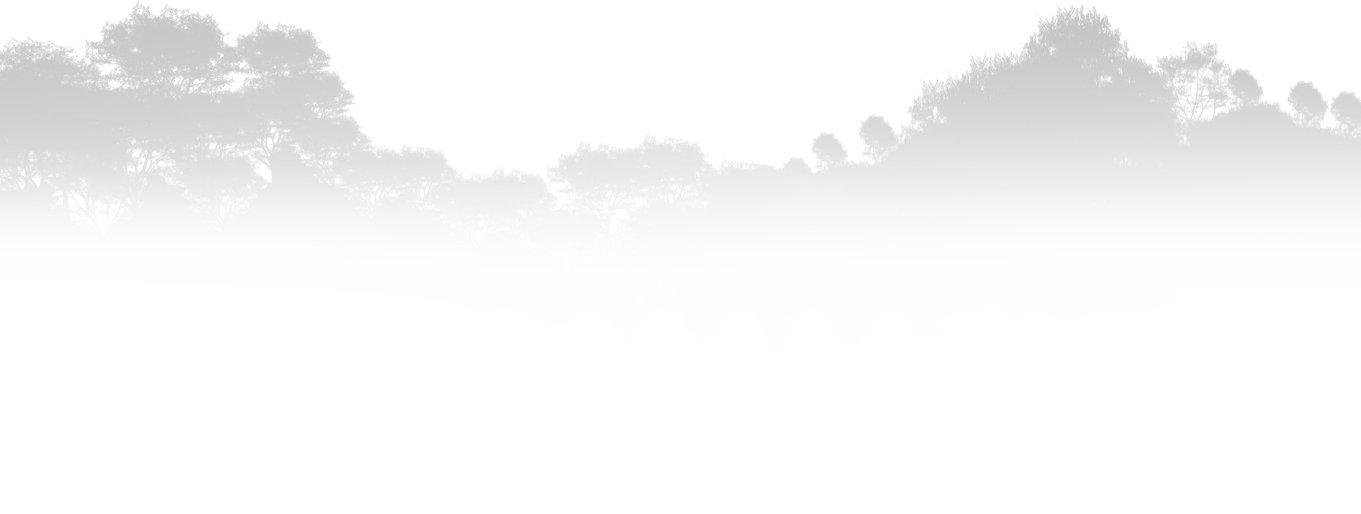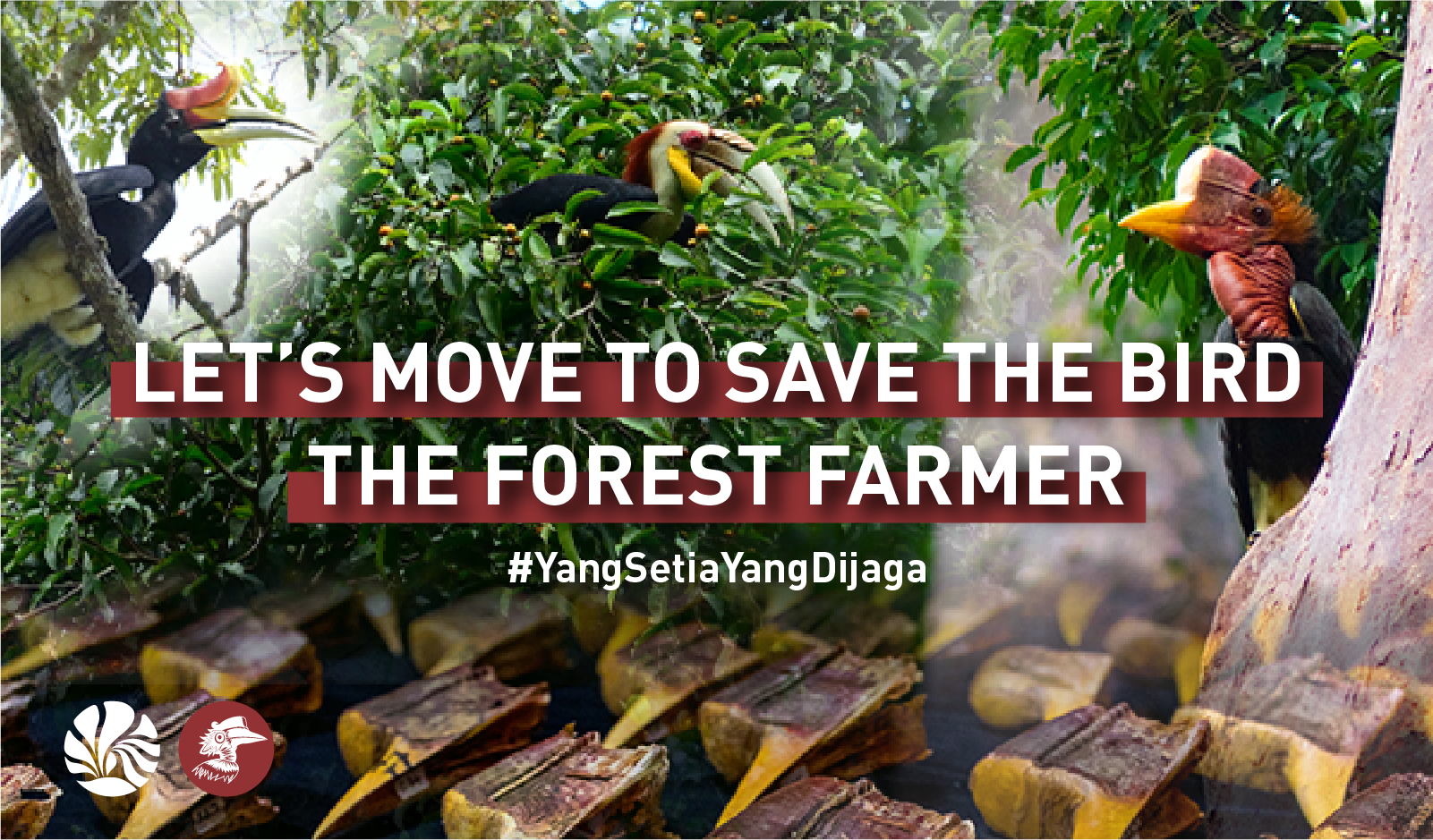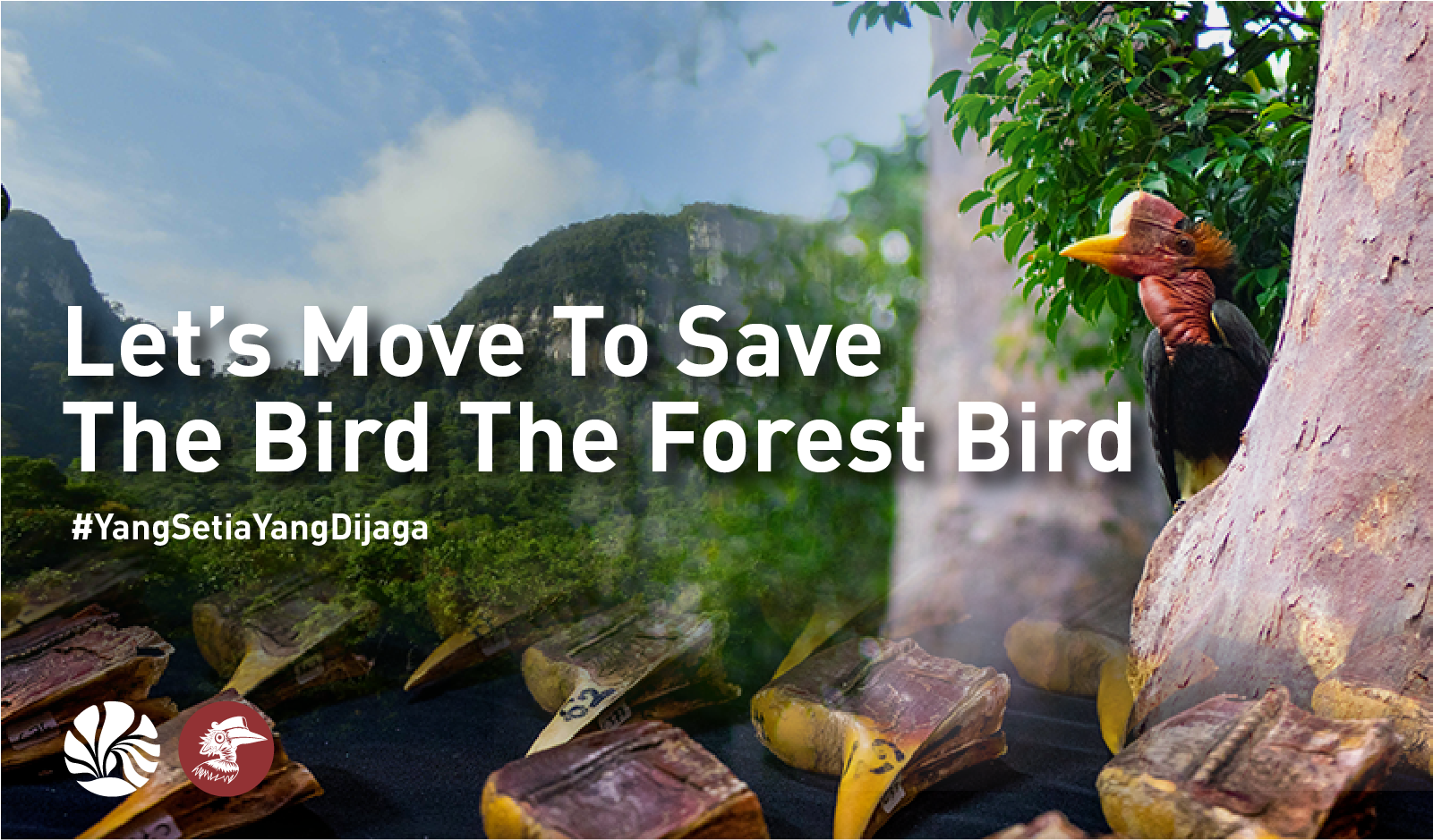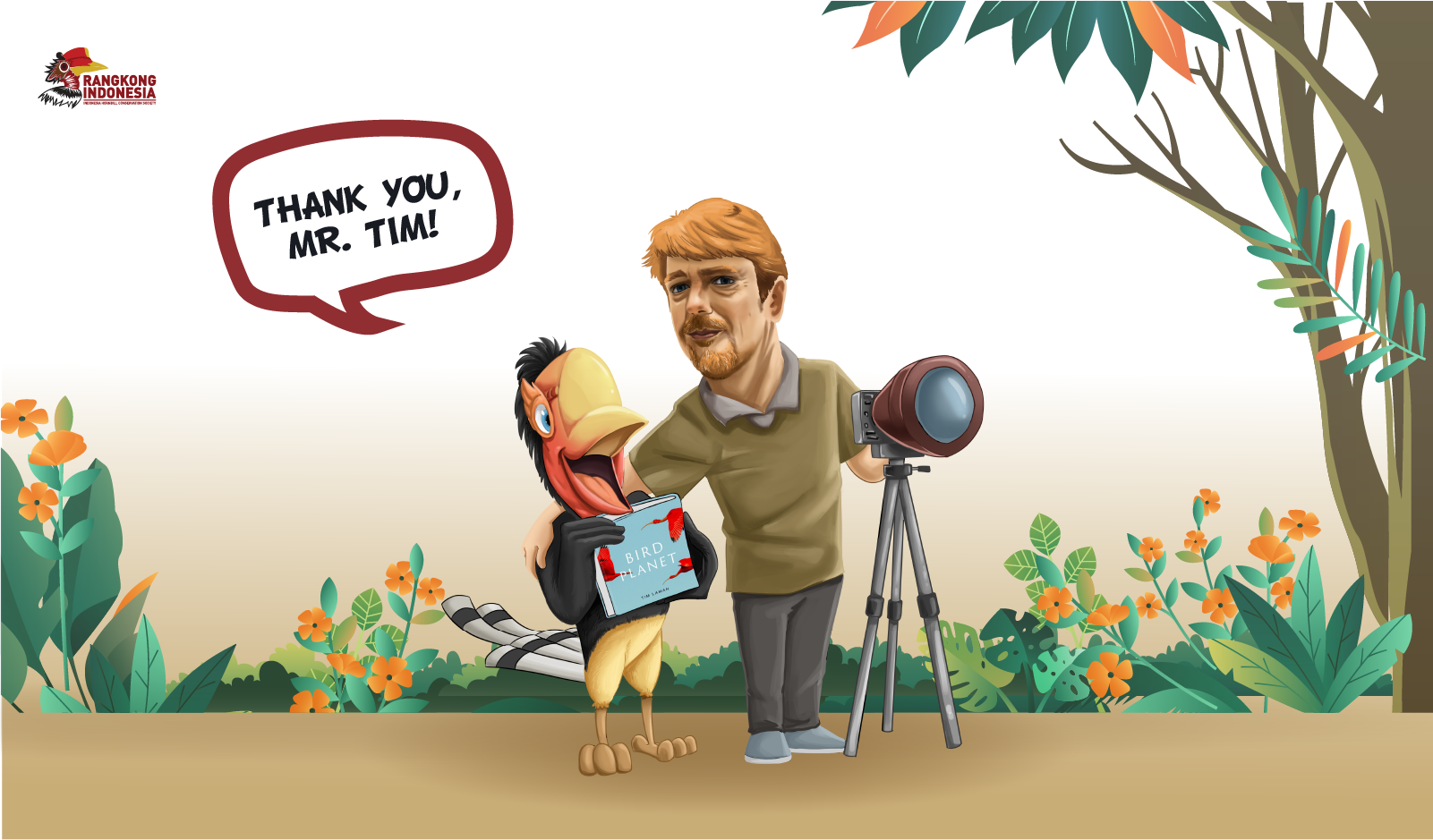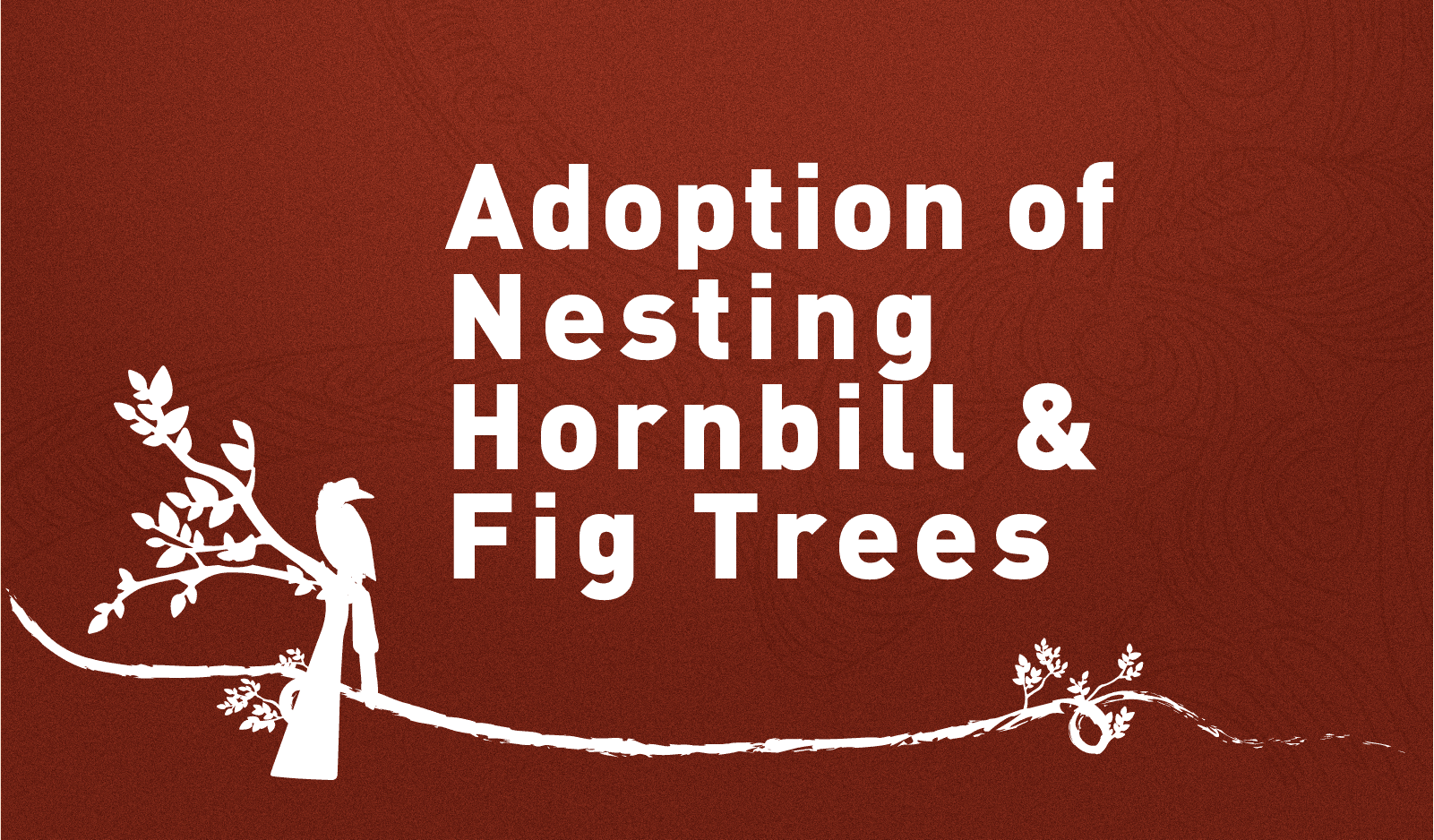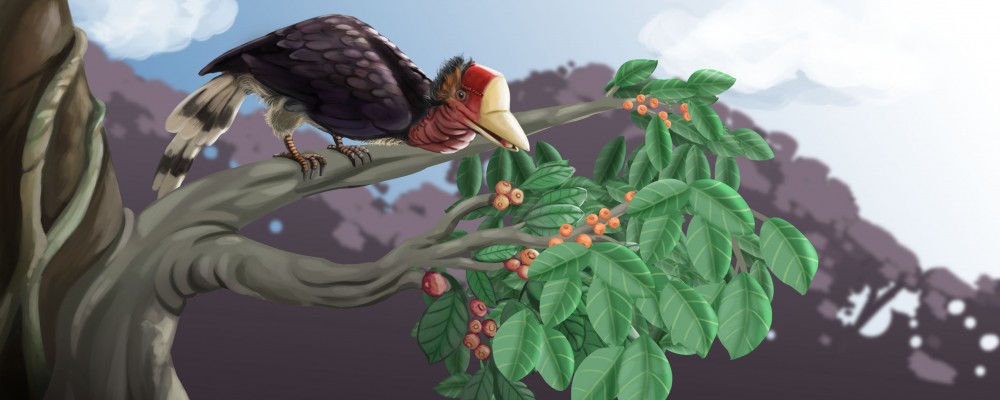
The favorite feed for the group of hornbills is the fruit of figs (Ficus spp. Moraceae), there are many types of figs, but the most favored hornbills are figs with large fruit sizes. The Ara Tree is very familiar with the Iban Dayak culture in Sungai Utik Hamlet, Kapuas Hulu, West Kalimantan. They believe in the existence of spirits inhabiting the fig tree. "This spirit is also called ghost kara. The ghosts that inhabit the Ara tree are various, there are ghosts of wind, rain, land and water guards. That is why no Iban Dayak Tribe dares to cut Ara trees. "If you cut down the Ara trees, that means they disturb the house of the environment-guarding ghosts" explained Inam as the Head of the Hamlet in Sungai Utik. It turns out that the local knowledge of the Iban Dayak Tribe can be linked to scientific explanations.
Most of the fig trees are hemiefifit, which starts their life as epiphytes in other trees, but when the roots reach the ground they will begin to suffocate by twisting the host tree. If this tree is old enough it will have many branches, so it has a role as a windbreaker. Ara trees also have the highest photosynthesis rate compared to other trees (Pierantoni, 2017) so that Fig can supply more oxygen. The transpiration process can also be linked to maintain the balance of the rain process. In addition, the Ara tree also has many root branches that will maintain the structure of the soil and store water reserves during the rainy season, and will release the water during the dry season.
Each branch of the Ara stem will produce a lot of fruit. Between one fig tree and the other fig tree will bear fruit in different months, so the hornbill will still be able to eat his favorite fruit throughout the year. This factor causes the Ara tree to become a keystone species for frugivorus, such as hornbills (Shanahan et al. 2001). The ripe fruit will be brightly colored, like red or orange. If one fig tree produces a lot of fruit, it is certain that the hornbill and other animals will spend time eating the fig fruit. The hornbill shares space vertically when enjoying the fig fruit, the larger the hornbill size will occupy the top of the tree canopy position, while the small hornbill will occupy the bottom position of the canopy.
Before approaching the fig tree, a cula hornbill (Buceros rhinoceros) will loudly send a message to his partner, but before approaching the fig tree, a horn horn is in charge of checking the security around the fig tree, because sometimes there are other animals that can interfere like Klampiau or Gibbon. "Usually if there is already an Ivory Hornbill in the Ara tree that first eats the fig, another type of hornbill, no one dares to bother eating the highest fig fruit" says Jiram who likes to observe the hornbill's behavior.
"Ara fruit will usually run out for about a week. After it is finished, the figs will erode the leaves and will bear fruit again about 3-4 months later, "explained Yokyok Hadiprakarsa from Indonesian hornbills. Yokyok, who has been researching birds for a long time, understands the characteristics of the food trees of birds in the forest.
In addition to local understanding of Ara trees, the Iban Dayak tribe also has insight into how to predict the growth and development of the Hornbill Hornbill during the incubation period. "If you want to know the development of the Cula Hornbill, we usually see the shoots from the former seeds that fell on the land that the Hornbill Cula had eaten. If what we see is the new seed removing the needle bud means the hornbill cula child has just hatched. "If the shoots have one leaf, the hornbill hornbill has a feather, whereas if the shoot has two to three leaves, the horn horn has been able to fly," said Jiram, trying to explain while setting his breath after climbing the hill to observe the hornbill.
The local knowledge of the Iban Dayak tribe was obtained thanks to their care of the forest and their animals. For them forests are not only seen as a natural asset to sustain life, but are also valued as a space for them to develop local knowledge. Therefore, the Iban Dayak community has the exclusive right to utilize and process their natural resources in a sustainable manner so that they remain empowered in the future.
